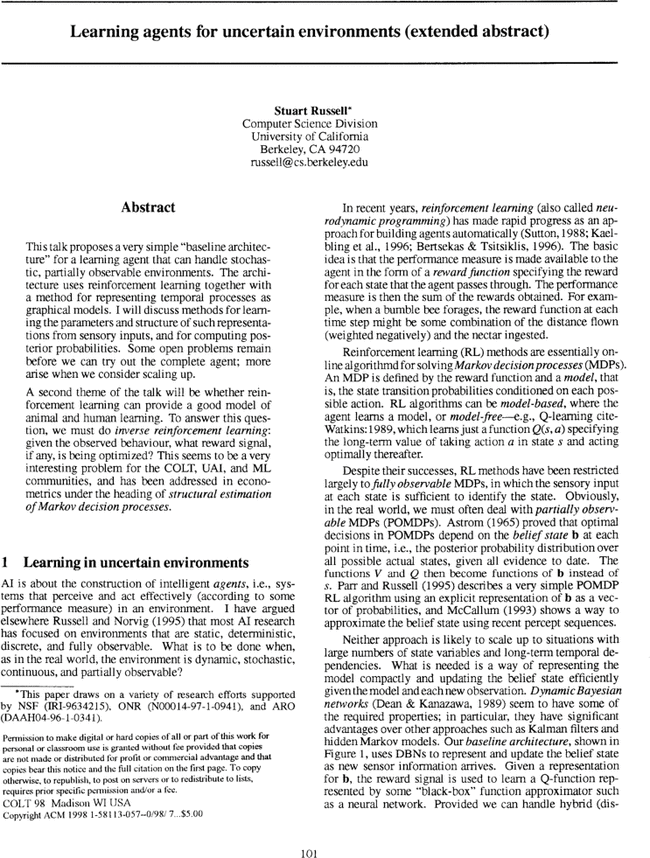Cited By
View all- Karwowski JSzynkiewicz WNiewiadomska-Szynkiewicz E(2024)Bridging Requirements, Planning, and Evaluation: A Review of Social Robot NavigationSensors10.3390/s2409279424:9(2794)Online publication date: 27-Apr-2024
- Cao HWu ZXu R(2024)Inference of Utilities and Time Preference in Sequential Decision-MakingSSRN Electronic Journal10.2139/ssrn.4840776Online publication date: 2024
- Uwano F(2024)Learning Agents in Robot Navigation: Trends and Next ChallengesJournal of Robotics and Mechatronics10.20965/jrm.2024.p050836:3(508-516)Online publication date: 20-Jun-2024
- Show More Cited By




